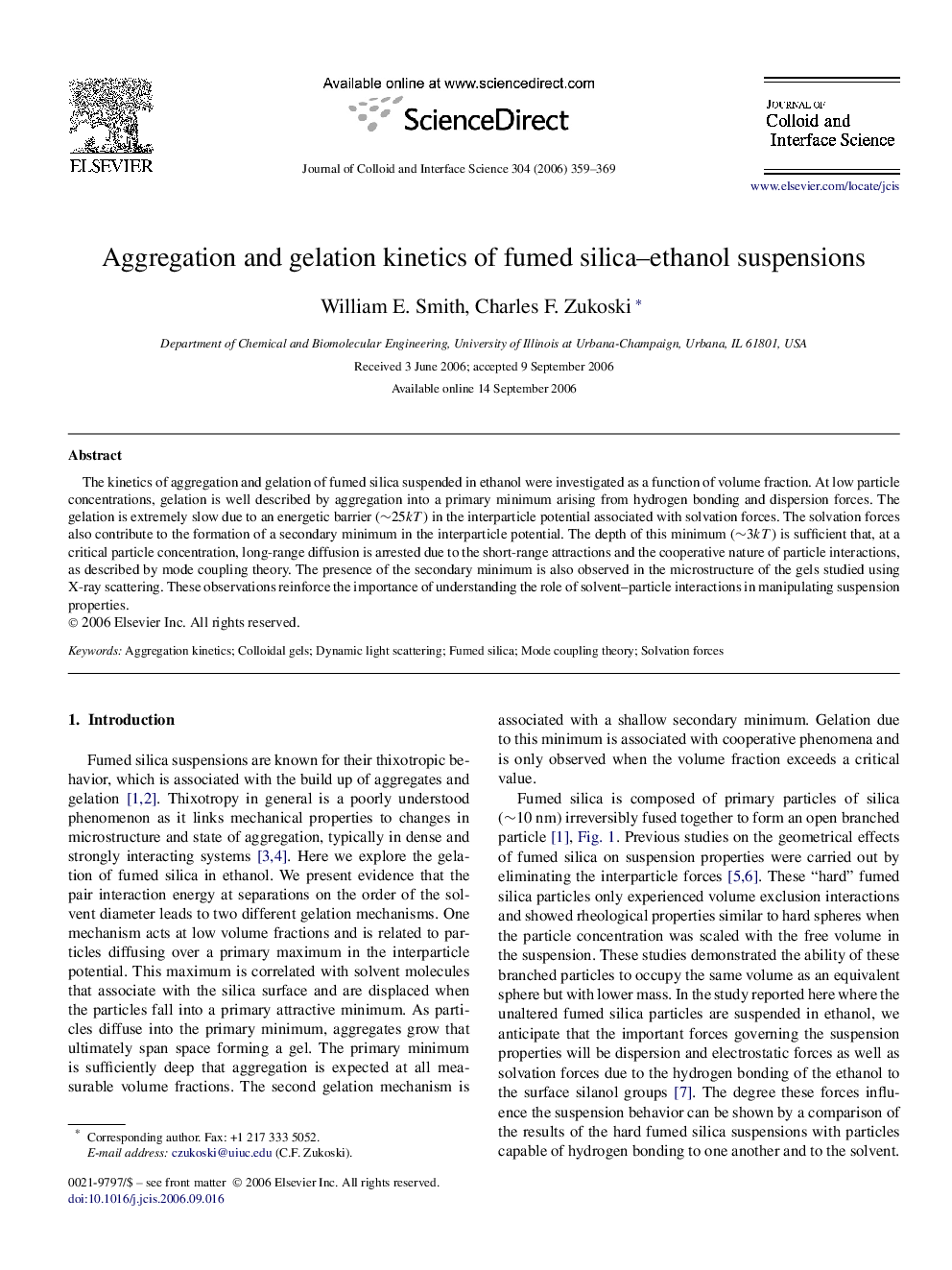| Article ID | Journal | Published Year | Pages | File Type |
|---|---|---|---|---|
| 612557 | Journal of Colloid and Interface Science | 2006 | 11 Pages |
The kinetics of aggregation and gelation of fumed silica suspended in ethanol were investigated as a function of volume fraction. At low particle concentrations, gelation is well described by aggregation into a primary minimum arising from hydrogen bonding and dispersion forces. The gelation is extremely slow due to an energetic barrier (∼25kT∼25kT) in the interparticle potential associated with solvation forces. The solvation forces also contribute to the formation of a secondary minimum in the interparticle potential. The depth of this minimum (∼3kT∼3kT) is sufficient that, at a critical particle concentration, long-range diffusion is arrested due to the short-range attractions and the cooperative nature of particle interactions, as described by mode coupling theory. The presence of the secondary minimum is also observed in the microstructure of the gels studied using X-ray scattering. These observations reinforce the importance of understanding the role of solvent–particle interactions in manipulating suspension properties.
Graphical abstractTwo distinct mechanisms of gelation modified by solvation forces in fumed silica–ethanol suspensions. (1) Diffusion over potential barrier into primary minimum. (2) Localization in a secondary minimum.Figure optionsDownload full-size imageDownload as PowerPoint slide
